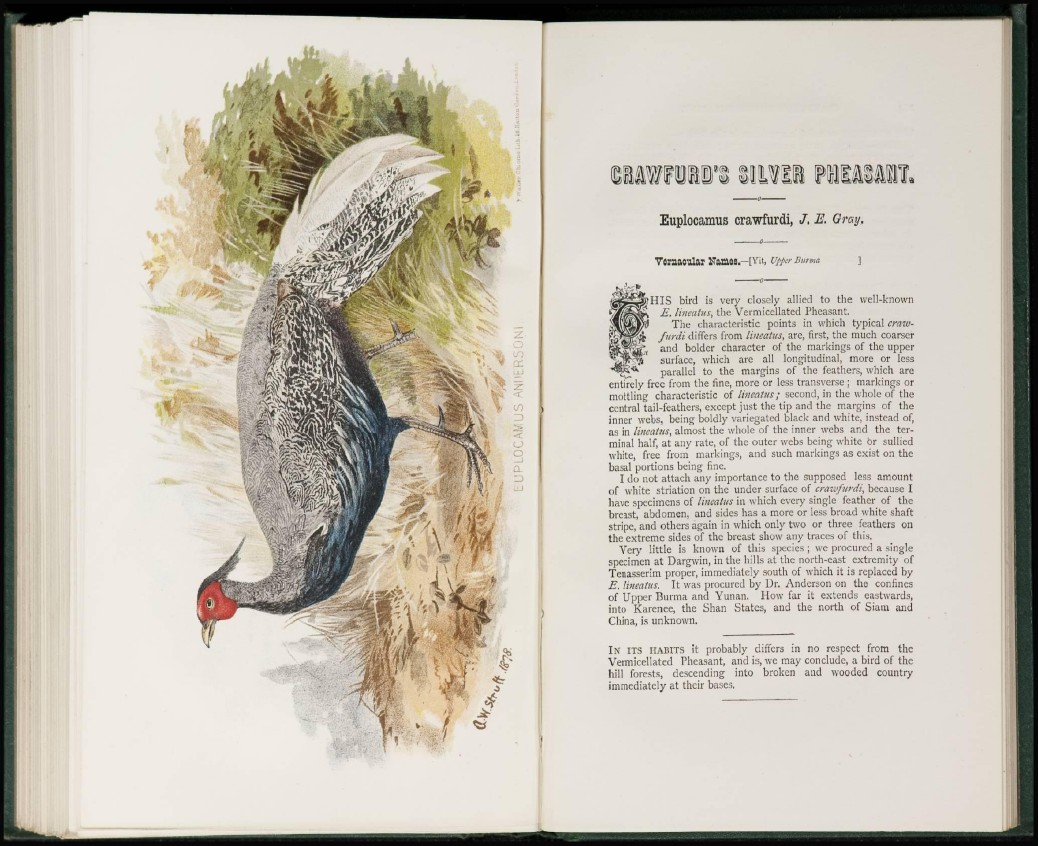
Euplocamus crawfurdi, /. E. Gray.
Vernacular Names.—[Yit, upper Burma ]
H I S bird is very closely allied to the well-known
E. lineatus, die Vermicellated Pheasant.
The characteristic points in which typical crawfurdi
differs from lineatus, arc, first, the much coarser
and bolder character of the markings of the upper
surface, which arc all longitudinal, more or less
parallel to the margins of the feathers, which are
entirely free from the fine, more or less transverse ; markings or
mottling characteristic of lineatus; second, in the whole of the
central tail-feathers, except just the tip and the margins of t he
inner webs, being boldly variegated black and white, instead of,
as in lineatus, almost the whole of the inner webs and the terminal
half, at any rate, of the outer webs being white or sullied
white, free from markings, and such markings as exist on the
basal portions being fine.
I do not attach any importance to the supposed less amount
of white striation on the under surface of crawfurdi, because I
have specimens of lineatus in which every single feather of the
breast, abdomen, and sides has a more or less broad white shaft
stripe, and others again in which only two or three feathers on
the extreme sides of the breast show any traces of this.
Very little is known of this species ; we procured a single
specimen at Dargwin, in the hills at the north-east extremity of
Tenasserim proper, immediately south of which it is replaced by
E. lineatus. It was procured by Dr. Anderson on the confines
of Upper Burma and Yunan. How far it extends eastwards,
into Karenee, the Shan States, and the north of Siam and
China, is unknown.
I N ITS HABITS it probably differs in no respect from the
Vermicellated Pheasant, and is, we may conclude, a bird of the
hill forests, descending into broken and wooded country
immediately at their bases.